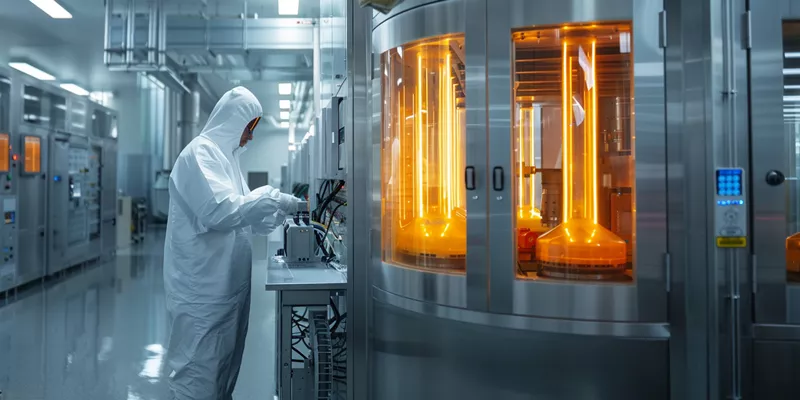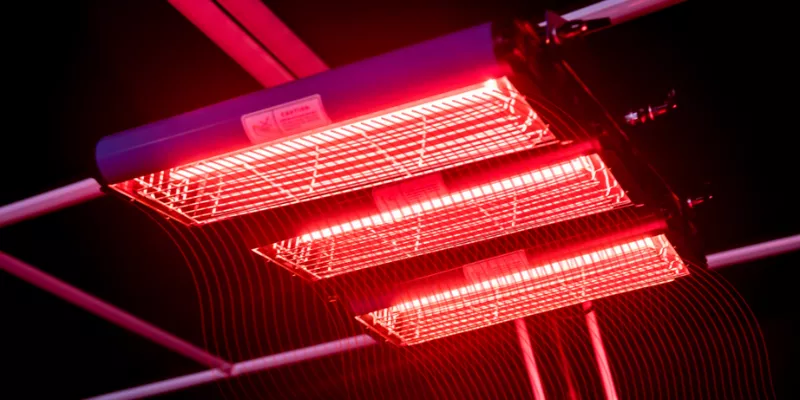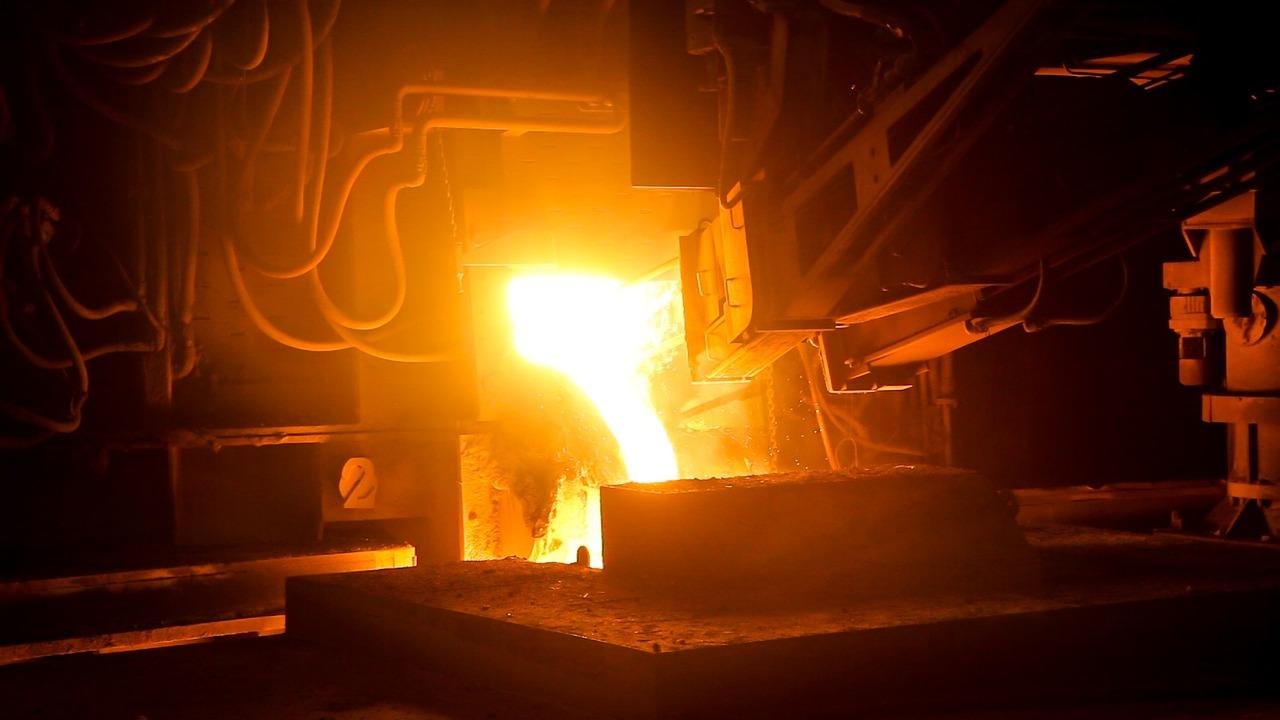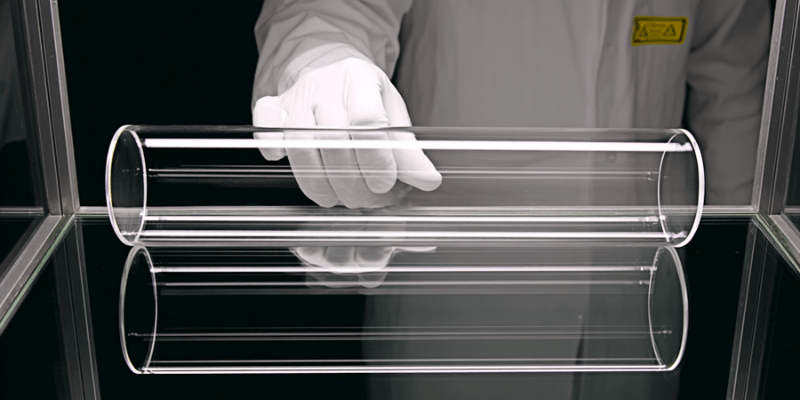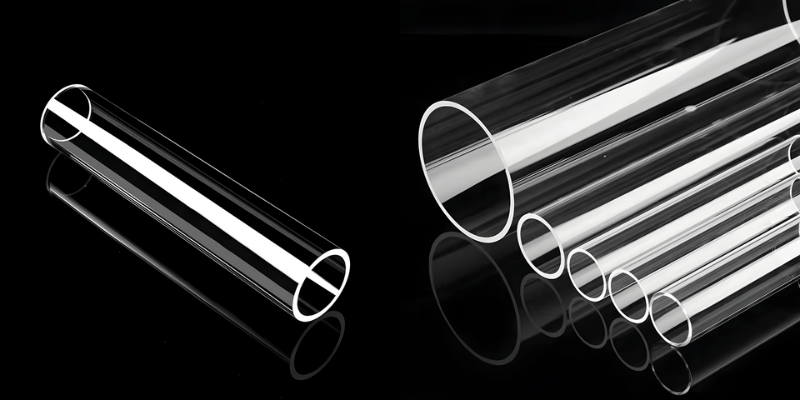
A quartz tube consists of high-purity fused silica shaped into a cylinder. This material contains almost pure silicon dioxide, which sets it apart from regular glass. Industries rely on quartz tubes for high-temperature, optical, and chemical applications. The semiconductor industry uses more than 60% of all quartz tubes, while solar photovoltaic manufacturing accounts for over 30%. The following table shows market share by region and industry:
Industry | Market Share (%) |
|---|---|
Semiconductor Industry | |
Solar Photovoltaic Industry | >30% |
Asia Pacific Region | 49% |
North America | 32.8% |
Europe | 25.3% |
Key Takeaways
Quartz tubes are made from high-purity fused silica, offering superior thermal stability and chemical resistance compared to regular glass.
The semiconductor industry uses over 60% of quartz tubes, highlighting their importance in high-tech applications.
Fused silica's amorphous structure allows quartz tubes to resist thermal shock, making them ideal for environments with rapid temperature changes.
Selecting the right purity and OH content is crucial for applications like UV sterilization and semiconductor manufacturing to prevent contamination.
Regular cleaning and careful handling of quartz tubes can enhance their performance and extend their service life.
What Material Composition Defines a Quartz Tube?
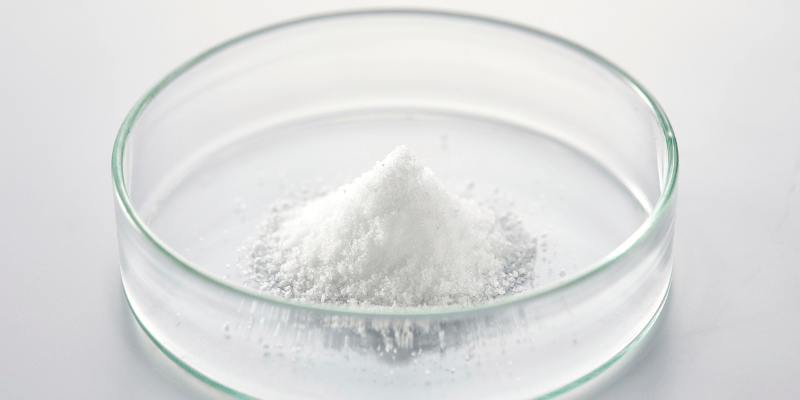
How Fused Silica Glass Differs from Natural Quartz Crystal Structure
A quartz tube is made from fused silica glass, which has an amorphous structure. This means the atoms do not form a regular pattern. Natural quartz crystal, on the other hand, has a crystalline structure with a repeating atomic arrangement. The difference in structure affects purity and performance.
Feature | Fused Silica Glass | Natural Quartz Crystal |
|---|---|---|
Structure | Amorphous (non-crystalline) | Crystalline |
Composition | Almost pure silica in amorphous form | Mineral compound of silicon and oxygen |
Purity | Ultra-high purity levels (>99.95%) | Variable purity levels (95-99.9%) |
Fused silica is produced from high-purity synthetic silica sources. Quartz glass is made from natural quartz crystals or processed silica. Only fused silica is used for quartz tubes because it provides higher purity and better thermal stability.
Fused silica has total metallic contamination below 1 ppm. Fused quartz contains approximately 20 ppm of impurities, mainly Al₂O₃, with smaller amounts of alkalis, Fe₂O₃, TiO₂, MgO, and ZrO₂. The hydroxyl (OH) content in fused silica can be very high, while fused quartz usually has lower OH content.
Electrical Fusion vs Flame Fusion Manufacturing Impact on Purity
Manufacturers use two main methods to produce quartz tubes: electrical fusion and flame fusion. Electrical fusion melts quartz sand in a controlled atmosphere. This process creates higher purity levels because it limits contamination. Flame fusion melts quartz crystals in a high-temperature flame. This method can introduce more hydroxyl (OH) groups, which affect the material's properties.
Type of Quartz Sand | SiO₂ Purity Percentage |
|---|---|
Standard Quartz Sand | ≥ 99.98% |
High-Purity Quartz Sand | ≥ 99.995% |
Production Method | OH Content (ppm) |
|---|---|
Electrical Fusion | 150 |
Flame Fusion | 180 - 250 |
Electric fusion uses continuous and batch fusion techniques. These methods melt quartz sand in a controlled environment, which keeps contamination low. Flame fusion uses a high-temperature flame to melt quartz crystals. This process can increase OH content, which may change the properties of the quartz tube.
Understanding the Amorphous Structure and Isotropic Properties
The amorphous structure of fused silica gives quartz tubes unique properties. The atoms in fused silica do not line up in a regular pattern. This random arrangement makes the material optically isotropic. It does not show birefringence, so its refractive index stays the same in all directions.
Fused silica is chemically inert and resists most acids. This makes it useful in chemical processing and semiconductor fabrication. The thermal expansion coefficient is very low, about 0.5 × 10⁻⁶ K⁻¹. This property helps quartz tubes resist thermal shock.
The disordered atomic arrangement in fused silica allows it to endure large temperature changes without breaking. Crystalline quartz has a rigid structure, which makes it harder but more likely to crack under thermal stress.
Fused silica is hard and robust. Manufacturers can machine and polish it for many industrial uses. The unique mechanical strength and flexibility of quartz tubes come from their amorphous structure.
What Physical and Thermal Properties Make Quartz Tubes Unique?
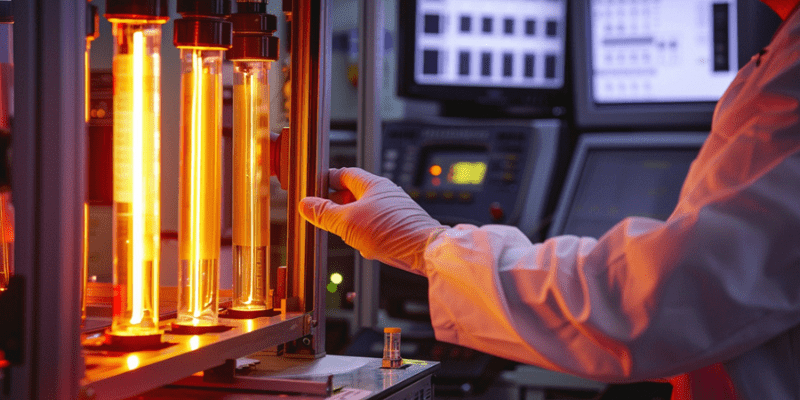
Quartz tubes stand out because of their remarkable physical and thermal characteristics. These properties make them essential in high-temperature, optical, and chemical environments.
Thermal Expansion Coefficient and Thermal Shock Resistance Mechanisms
Fused silica, the material used in quartz tubes, has a very low coefficient of thermal expansion. This means it does not expand or contract much when heated or cooled. The table below compares the thermal expansion of fused silica with other common glass types:
Glass Type | Coefficient of Thermal Expansion (CTE) (10⁻⁶ /K) |
|---|---|
Fused Silica | 0.55 |
3.25 | |
9.0 |
A low thermal expansion coefficient helps quartz tubes resist cracking when exposed to sudden temperature changes. Several factors contribute to their excellent thermal shock resistance:
Factor | Description |
|---|---|
Low Thermal Expansion | Quartz has a low thermal expansion coefficient, reducing thermal stress compared to other materials. |
Material Purity | High-purity quartz is more resistant to thermal shock; impurities can create stress points. |
Wall Thickness | Thicker walls distribute thermal stress more evenly, but excessive thickness can lead to uneven heating. |
Heating/Cooling Rates | Gradual changes are less likely to cause thermal shock than rapid temperature changes. |
Surface Quality | Smooth, defect-free surfaces are less prone to cracking under thermal stress. |
Quartz tubes can survive rapid temperature changes that would shatter ordinary glass. The unique atomic structure of fused silica allows it to absorb and release heat without forming cracks.
Temperature Limits: Continuous vs Short-Term Maximum Operating Ranges
Quartz tubes can handle very high temperatures. Their performance depends on how long they are exposed to heat and the environment in which they operate.
For long-term use, quartz tubes can withstand temperatures up to 1100°C.
For short-term use, they can tolerate temperatures up to 1200°C.
Exceeding 1200°C may cause deformation of the quartz tube.
Under vacuum conditions, the maximum temperature rating decreases to 1000°C.
Quartz tubes offer excellent thermal stability for most industrial applications. In comparison, alumina ceramic tubes can withstand even higher temperatures, up to 1800°C, and are used for the most extreme conditions. However, quartz tubes provide a unique combination of purity and optical clarity that many other ceramics cannot match.
Tip: Always check the operating environment and temperature requirements before selecting a quartz tube for your application.
Density and Mechanical Properties per ASTM Standards
The density and mechanical strength of quartz tubes follow strict industry standards. According to ASTM C693, fused silica has a density of about 2.20 g/cm³. This low density, combined with high purity, gives quartz tubes their lightweight yet robust nature.
Key mechanical properties include:
Hardness: Quartz tubes are hard and scratch-resistant, making them suitable for demanding environments.
Flexural Strength: They can withstand bending forces without breaking.
Compressive Strength: Quartz tubes resist crushing forces, which is important in high-pressure systems.
Manufacturers test these properties using ASTM and ISO standards to ensure each quartz tube meets quality and safety requirements.
Note: The combination of low density, high strength, and thermal stability makes quartz tubes ideal for laboratory, semiconductor, and industrial furnace applications.
Which Optical and Chemical Properties Enable Specialized Applications?
UV and Visible Transmission Specifications for Optical Applications
Quartz tubes offer outstanding optical clarity. They transmit both ultraviolet (UV) and visible light with high efficiency. This property makes them essential in scientific instruments, UV sterilization, and photolithography. The table below compares the light transmission of quartz glass tubes and borosilicate glass tubes:
Material | Visible Light Transmittance | UV Transmittance | Optical Properties |
|---|---|---|---|
Quartz Glass Tube | > 93% | > 80% | Superior optical properties |
Borosilicate Glass Tube | ~ 92% | N/A | Good light transmittance |
Quartz tubes maintain high UV transmittance, while borosilicate glass blocks most UV rays. This difference allows quartz tubes to support applications that require strong UV exposure.
OH Content Impact on Infrared Performance and Material Selection
The amount of hydroxyl (OH) ions in a quartz tube affects its ability to transmit infrared (IR) light. High OH content creates absorption bands that block IR wavelengths, especially above 2.5 microns. For applications like infrared heating, low OH content is important. The table below shows recommended OH levels for different grades:
Grade Type | OH Content Level |
|---|---|
Standard | < 10 ppm |
Specialized | < 1 ppm |
Selecting the right OH content ensures the quartz tube performs well in infrared environments.
Chemical Resistance Testing Standards and Performance Limits
Quartz tubes resist most acids, bases, and solvents. This chemical inertness makes them reliable in laboratories and chemical plants. Their resistance to corrosion increases their service life. However, some strong acids, alkalis, and metal salts can attack the surface. In laboratory settings, using a quartz tube with highly corrosive chemicals may shorten its lifespan. Choosing the correct type and taking precautions helps maintain performance.
Quartz tubes do not react with most chemicals.
They remain stable in harsh environments.
Some chemicals can reduce their lifespan, so proper selection is important.
How to Select the Right Quartz Tube Specifications for Your Application?
Matching Purity and OH Content Requirements to Application Type
Selecting the correct purity and OH content for a quartz tube depends on the intended use. Different industries require specific grades to ensure performance and safety. For semiconductor manufacturing, ultra-high purity is essential. The purity of semiconductor-grade quartz reaches 99.995% SiO₂, with metal impurities such as sodium, potassium, and iron kept below parts per million. This prevents contamination of silicon wafers and maintains product quality.
Type | OH Content |
|---|---|
PQ181E/ PQ181EH | OH < 10 ppm |
PQ181E-R/ PQ181EH-R | OH < 30 ppm |
Many sensitive applications, such as UV disinfection and pharmaceutical production, also demand high purity. Ultra-high purity (≥99.995% SiO₂) prevents leaching of metal ions. Smooth surfaces and tight tolerances help control contamination. Regular cleaning and inspection keep the tubes in optimal condition.
High purity quartz tubes are crucial for UV sterilization, as impurities can block UV light.
Semiconductor and pharmaceutical industries require minimal impurities to avoid contamination.
Lower purity quartz may work for less sensitive uses, showing that application type directly influences the required purity.
Dimensional Tolerance Specifications for Different Operating Conditions
Dimensional tolerance ensures that a quartz tube fits precisely in its application. Laboratory equipment often requires tight tolerances to guarantee proper function. For example:
Dimensional Tolerance: ±0.1 mm
Application: Ensures seamless integration into chromatography systems with less than 0.2 mm clearance.
Tight tolerances help maintain vacuum integrity in semiconductor tools and prevent leaks in laboratory setups. In less demanding environments, slightly wider tolerances may suffice. Always match the tolerance to the operating conditions and the level of precision needed.
Tip: Review the equipment specifications before choosing a quartz tube to ensure compatibility and reliable performance.
A quartz tube offers advantages over conventional glass, including UV transparency, thermal shock resistance, and chemical inertness. These features support its use in laboratory instruments, UV sterilization, and high-temperature processes.
High temperature resistance
Corrosion resistance
Good thermal stability
Excellent light transmission
Electrical insulation
Selecting the right specifications, such as purity and size, improves service life and performance.
Factor | Impact |
|---|---|
Material Purity | Enhances resistance and longevity |
Temperature Rating | Prevents failure in extreme conditions |
Size and Shape | Optimizes performance for each application |
Regular cleaning, gradual heating, and careful handling help maximize reliability.
FAQ
What is the main difference between quartz tubes and regular glass tubes?
Quartz tubes contain almost pure silicon dioxide. Regular glass tubes have added materials like sodium and calcium. This difference gives quartz tubes higher temperature resistance and better optical clarity.
What applications use quartz tubes most often?
Semiconductor manufacturing, laboratory equipment, UV sterilization, and high-temperature furnaces use quartz tubes. These industries need materials that handle heat, resist chemicals, and transmit light well.
What makes quartz tubes resistant to thermal shock?
Quartz tubes have a very low thermal expansion coefficient. This property allows them to handle rapid temperature changes without cracking or breaking.
What should buyers check before selecting a quartz tube?
Buyers should review purity level, OH content, size, and tolerance. They should also check the required temperature rating and chemical resistance for their application.


